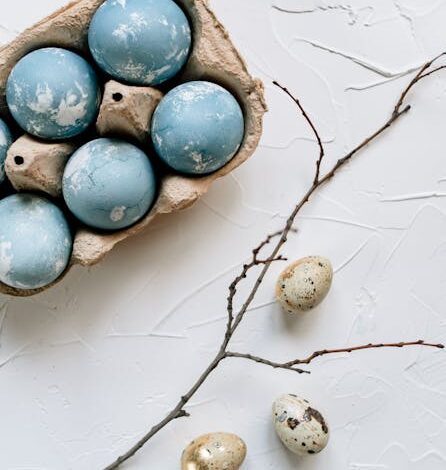Best Dye Free Food Coloring

Want to add a splash of color to your baking and cooking without artificial dyes? You’re in the right place! As a baking enthusiast and mom, I’ve explored the world of dye-free food coloring, and I’m excited to share my findings with you. Let’s dive into the best natural options for vibrant, safe, and delicious creations!
Why Choose Dye-Free Food Coloring?
Artificial food dyes are often linked to concerns about hyperactivity in children, allergic reactions, and other potential health issues. Many parents and health-conscious individuals are now looking for safer, natural alternatives. Dye-free food coloring uses pigments derived from fruits, vegetables, and other edible plants, offering a healthier way to add color to your treats.
Top Natural Food Coloring Options
Here’s a breakdown of some of the best dye-free food coloring options, along with how to use them and what colors they create:
Beet Juice/Beet Powder: For a beautiful red or pink hue, beet juice or beet powder is an excellent choice. You can use fresh beet juice or buy beet powder online or in health food stores. When using juice, be mindful of the added liquid, which can affect the consistency of your recipe. Beet powder is more concentrated, so use it sparingly.
Turmeric: Turmeric is a spice that delivers a vibrant yellow color. A little goes a long way! Start with a tiny amount (⅛ teaspoon) and add more until you reach your desired shade. Turmeric can sometimes impart a slight flavor, so consider this when using it in delicate desserts.
Spinach Juice/Spinach Powder: Need a green color? Spinach is your friend! You can blend fresh spinach with water and strain the juice, or use spinach powder. Similar to beet juice, the liquid from fresh spinach juice might impact the recipe, so use it carefully. Spinach powder is a convenient alternative.
Blue Spirulina: This algae-based powder creates a stunning blue color. It’s a popular choice because it’s odorless and tasteless, and the color is incredibly vibrant. You can find blue spirulina powder online or in specialty stores.
Matcha Powder: For a more muted green, matcha powder works wonders. It adds a subtle green hue along with a unique, slightly earthy flavor that pairs well with many desserts. Use high-quality matcha for the best color and taste.
Red Cabbage: To get a purple or blue color (depending on the pH), you can boil red cabbage and use the resulting liquid. Be aware that the color can change based on the acidity of your mixture. Adding a bit of baking soda can help achieve a more blueish tint, while a touch of lemon juice can bring out the purple tones.
Sweet Potato Powder: For orange shades, try sweet potato powder. It provides a natural orange color and a slightly sweet flavor. It works great in frostings, batters, and other recipes where you want to add a warm, inviting hue.
Butterfly Pea Flower Powder: This powder, made from dried butterfly pea flowers, creates a beautiful blue or purple color. Like red cabbage, the color is pH-sensitive. Adding an acid (like lemon juice) will turn it purple, while adding an alkaline (like baking soda) can enhance the blue.
Tips for Using Natural Food Coloring
Working with natural food coloring can be a bit different than using artificial dyes. Here are some helpful tips to keep in mind:
Start Small: Natural food colorings are often less concentrated than artificial dyes. Start with a small amount and gradually add more until you achieve your desired color.
Consider the Flavor: Some natural colorings can impart a slight flavor to your recipe. Choose options that complement the taste of your dish.
Adjust Liquid Content: If using juice-based colorings, adjust the amount of other liquids in your recipe to maintain the correct consistency.
Be Mindful of pH: The pH of your ingredients can affect the color of some natural dyes, especially those derived from red cabbage and butterfly pea flower. Experiment to see how different ingredients interact.
Embrace Imperfection: Natural food colorings may not always produce the exact same vibrant hues as artificial dyes. Embrace the subtle variations and unique colors you can achieve.
DIY vs. Store-Bought Natural Food Coloring
You have two main options: make your own natural food coloring or buy pre-made versions. Making your own can be fun and allows you to control the ingredients, but it can also be time-consuming. Store-bought natural food colorings are convenient and offer consistent results, but it’s essential to read the labels to ensure they are truly dye-free.
Concerns and Considerations
While natural food colorings are generally considered safer than artificial dyes, there are a few things to keep in mind:
Allergies: Be aware of potential allergens. For example, some people are allergic to spirulina. Always check the ingredient list and be mindful of any sensitivities.
Color Fading: Natural colors can sometimes fade when exposed to heat or light. To minimize fading, store your creations in a cool, dark place.
Cost: Natural food colorings can be more expensive than artificial dyes, especially if you opt for high-quality, concentrated powders.
Frequently Asked Questions
Are natural food colorings truly dye-free?
Yes, natural food colorings are derived from natural sources like fruits, vegetables, and algae, and don’t contain synthetic dyes. Always double-check the ingredient list to ensure there are no hidden artificial additives.
Can I mix natural food colorings to create new colors?
Absolutely! Experimenting with mixing different natural food colorings can create a wide range of shades. For example, mixing blue spirulina with turmeric can create a green color. Just be sure to mix small amounts at a time until you achieve the desired color.
Do natural food colorings taste different?
Some natural food colorings can impart a slight flavor, depending on the source. For example, turmeric can add a subtle earthy taste, while beet juice might have a slightly sweet flavor. Consider the flavor profile when choosing your colorings.
Where can I buy natural food colorings?
You can find natural food colorings online, at health food stores, and in some supermarkets. Look for brands that specialize in natural or organic products.
How do I store natural food colorings?
Store natural food colorings in a cool, dark, and dry place to prevent fading and maintain their quality. Powders should be stored in airtight containers to prevent moisture absorption.
Switching to dye-free food coloring is a simple yet impactful way to make healthier choices in your kitchen. By exploring the wonderful world of natural pigments, you can create beautiful, delicious treats without compromising on your well-being. So go ahead, get creative, and enjoy the vibrant colors nature has to offer!



